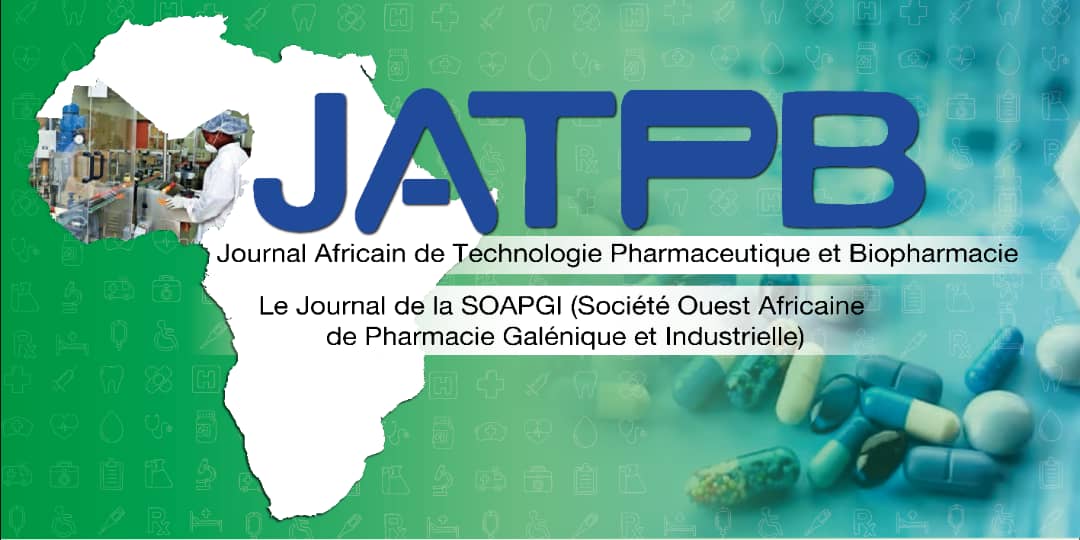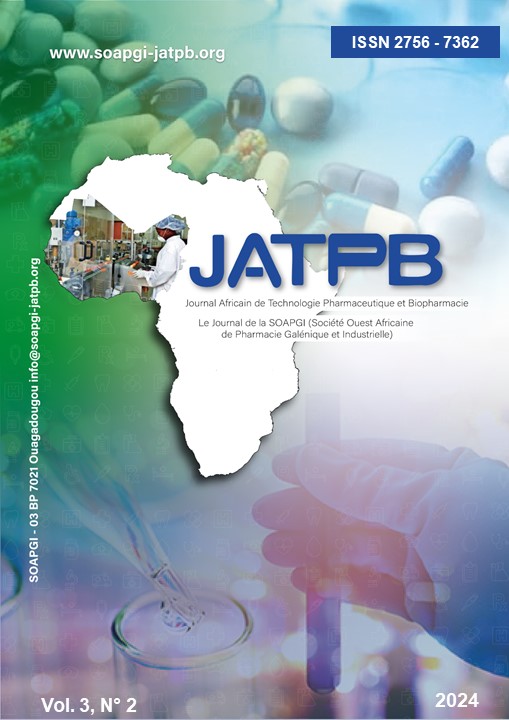Encapsulation of methylene blue in nucleoside-lipid-based liposomes : physicochemical characterization and evaluation for photodynamic therapy of ovarian cancer
DOI :
https://doi.org/10.57220/jatpb.v3i2.185Mots-clés :
methylene blue, nanotechnology, photodynamic therapy, ovarian cancerRésumé
Methylene blue liposomes (MB-LPs) intended for photodynamic therapy (PDT) of ovarian cancer were formulated with a negatively charged nucleolipid and phosphatidylcholine using the lipidic film technique followed by an extrusion step. MB-LPs were characterized using dynamic light scattering (DLS), zeta potential (ZP), transmission electron microscopy (TEM), colloidal stability, Fourier-transform infra-red spectroscopy (FT-IR), UV-Visible spectroscopy and cellular studies. MB-LPs were spherical nano-objects with sizes obtained by DLS and TEM between 120 and 130 nm. MB-LPs showed a PDI near 0.10, a negative zeta potential near -42 mV and an encapsulation efficiency around 57 %. Characteristic peaks from ionic interactions of nucleolipids encapsulation of methylene blue were confirmed by FT-IR. Colloidal stability of MB-LPs was slightly affected in complex ionic media, sizes, PDI and ZP remained stable for 4 weeks at all storage temperature tested, allowing a potential use for in vitro and in vivo assays. The use of MB-LPs allowed slightly higher PDT activity based on the production of ROS against SKOV-3 ovarian cancer as compared to MB alone, a reduction of MB dark toxicity and a better protection against oxidation-reduction reactions.
Téléchargements
Téléchargements
Publiée
Comment citer
Numéro
Rubrique
Licence
(c) Tous droits réservés Koffi Kowouvi, Alexis Verger, Alexandra Gaubert, Philippe Barthelemy, Gilles Dollo, Nolwenn Brandhonneur 2024

Ce travail est disponible sous la licence Creative Commons Attribution 4.0 International .






